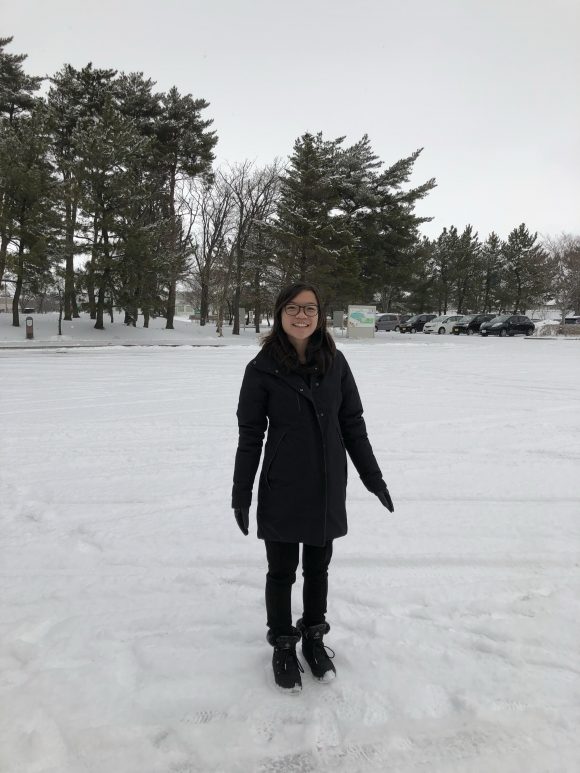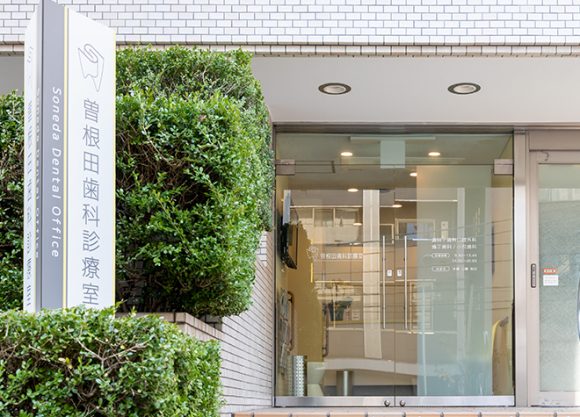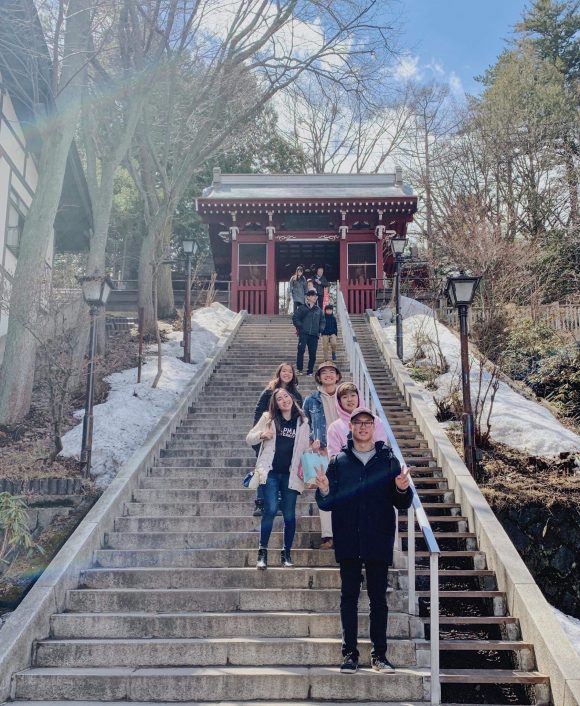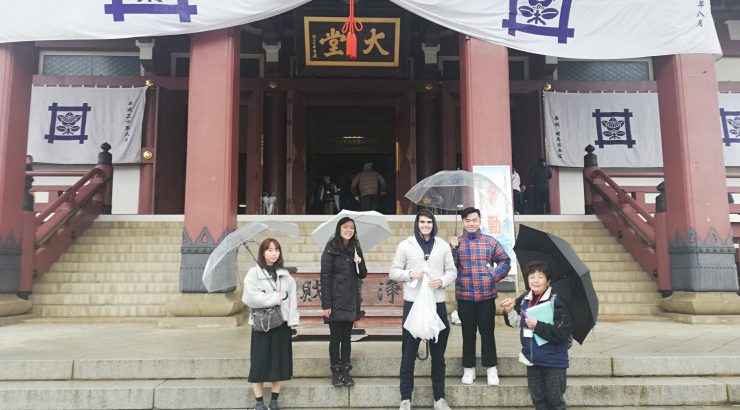National Health Insurance Abroad How A Toothache in Japan Inspired My Career Path
January 4, 2021
Noel McGuire ’21 is a Graduate Assistant Global Education Advisor in the Center for Global Education. She earned her undergraduate degree in Strategic and Corporate Communication and is pursuing a Masters in Health and Strategic Communication. Noel studied abroad in spring 2019 at Temple University, Tokyo, Japan.
 Like many others, I have never enjoyed going to the dentist. The sound of drills, the smell of hydrogen peroxide, the blinding overhead lights, and uncomfortable patient chairs, each aspect of the experience causes adrenaline and fear to course throughout my body. Yet, in the spring of 2019, I found myself facing the terrifying reality of needing an emergency dental appointment in a foreign country.
Like many others, I have never enjoyed going to the dentist. The sound of drills, the smell of hydrogen peroxide, the blinding overhead lights, and uncomfortable patient chairs, each aspect of the experience causes adrenaline and fear to course throughout my body. Yet, in the spring of 2019, I found myself facing the terrifying reality of needing an emergency dental appointment in a foreign country.
As an undergraduate student pursuing my bachelor’s degree in Strategic and Corporate Communication, I was given the opportunity to participate in a semester abroad program in Tokyo, Japan. Having been raised Japanese-American, it was my lifelong dream to live in Japan and immerse myself in the country’s culture. I was ecstatic to attend traditional Japanese festivals, to experience the healing onsens (hot springs), and to eat all the food I possibly could. In order to ensure I was able to accomplish as many of these things as I could, I signed up for several field trips that the Temple University, Japan Campus offered; one of which was a snow trip to Akita, one of the far northern prefectures. While on the bus, I began to feel discomfort in the lower left of my mouth. Assuming it was nothing, I continued with my day and enjoyed the trip with my classmates. However, as the trip progressed and we returned to Tokyo, the discomfort transformed into pain and the gum surrounding one of my teeth began to swell, causing extreme sensitivity. I was experiencing complications from a root canal I received the previous semester. Knowing this needed immediate attention, I reached out to a bilingual friend whom I met during the semester for assistance.
By incredible luck, my friend’s father used to work as a doctor in Japan and was able to connect me with a local Japanese dentist office. I was terrified. Not only did I have to face my fear of the dentist, but I found myself in a situation where I would be unable to communicate with my healthcare provider due to language barriers and had limited funds to pay for treatment. How was I supposed to navigate this situation? Without much choice, I arrived at the Japanese dental office and approached the counter with shaking hands.
 The receptionist greeted me in Japanese, and after I said hello, she seamlessly switched to speaking English. I thought this was miraculous luck, however, upon further research, I discovered that the Japanese government has put forth effort in staffing health facilities with bilingual staff in order to assist the foreign population to improve the quality of care in Japan. I was amazed. Feeling more comfortable now that one of my two barriers to health was addressed, I followed her to the exam area. The set up looked nearly identical to an American dentist office, with rows of patient chairs, small monitors to view patient files, and a silver tray of standard looking dental tools nearby. I sat with the dental hygienist, who also spoke English, as the dentist completed an exam, took an x-ray, and gave me treatment for my aching tooth. At the end of the visit, I held my breath as I went to the counter to pay for my appointment.
The receptionist greeted me in Japanese, and after I said hello, she seamlessly switched to speaking English. I thought this was miraculous luck, however, upon further research, I discovered that the Japanese government has put forth effort in staffing health facilities with bilingual staff in order to assist the foreign population to improve the quality of care in Japan. I was amazed. Feeling more comfortable now that one of my two barriers to health was addressed, I followed her to the exam area. The set up looked nearly identical to an American dentist office, with rows of patient chairs, small monitors to view patient files, and a silver tray of standard looking dental tools nearby. I sat with the dental hygienist, who also spoke English, as the dentist completed an exam, took an x-ray, and gave me treatment for my aching tooth. At the end of the visit, I held my breath as I went to the counter to pay for my appointment.
As it would turn out, due to my student visa status, I was able to present my residency card at the register and was eligible for Japan’s National Health Insurance System. For the exam, the panoramic x-ray, and the treatment, the total bill came to approximately $27 USD. I was utterly shocked. In the United States, the average cost for a panoramic x-ray alone can range between $100 – $200 USD for uninsured patients, making the cost of care a major barrier to health in America. Additionally, it is rare for standard healthcare plans in the United States to include dental coverage. Yet in Japan, even as an international student on a Visa, I was being cared for. After paying for the appointment (in cash since it was so affordable), I left the dental office feeling a deep sense of amazement and gratitude. Not only was I able to receive the medical care I needed, but received it in a way that met my linguistic, cultural, and financial needs as well.
 What began as a terrifying and nerve-wracking experience transformed into one that shaped the course of my future studies and professional career. I returned from my semester abroad with a newfound perspective on the importance of language and culture in patient-provider interactions as well as the need for changes in the American healthcare system. Translating this passion into action, I dedicated my following summer to work at a non-profit organization, Asian Health Services, which provides care to underserved Asian communities in over 18 languages, helping to address the linguistic and cultural barriers to health in America. Additionally, I have chosen to pursue my master’s degree in Health and Strategic Communication so I may better understand the intricacies of the healthcare system and find ways to innovate and improve.
What began as a terrifying and nerve-wracking experience transformed into one that shaped the course of my future studies and professional career. I returned from my semester abroad with a newfound perspective on the importance of language and culture in patient-provider interactions as well as the need for changes in the American healthcare system. Translating this passion into action, I dedicated my following summer to work at a non-profit organization, Asian Health Services, which provides care to underserved Asian communities in over 18 languages, helping to address the linguistic and cultural barriers to health in America. Additionally, I have chosen to pursue my master’s degree in Health and Strategic Communication so I may better understand the intricacies of the healthcare system and find ways to innovate and improve.
While attending an emergency dentist appointment during my semester abroad in Japan was never on my bucket list, I am incredibly grateful to have had the experience and hope to continue my work addressing the various needs of patients in the healthcare system.


